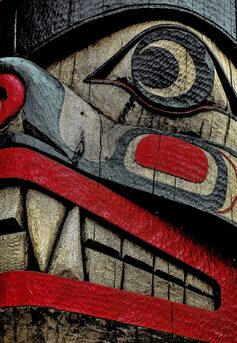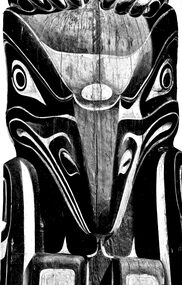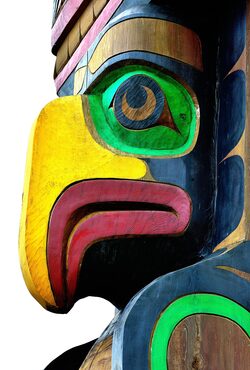
Bear
In Pacific Northwest indigenous cultures, bears are viewed as powerful symbols of strength, wisdom, protection, and healing. They are recognized as the guardians of the wilderness and are respected for their intelligence, resilience, and courage. The bear is seen as a teacher and provider, and their presence is often associated with prosperity, good luck, and good health.
In some tribal traditions, bears are considered sacred animals and are associated with specific tribes or clans. For example, the Kwakwaka'wakw people of British Columbia have a bear clan that is responsible for the well-being of the tribe and the balance of nature. The Haida people also have a bear crest that represents their connection to the natural world and their respect for all living things.
Bears also appear in many indigenous myths and legends as transformative figures. It is believed that through dreams and vision quests, individuals can gain the bear's wisdom and strength. The bear dance, a ceremonial dance performed by many Pacific Northwest tribes, is a way of honoring these powerful animals and seeking their guidance and protection.

Raven
Ravens play a significant role in the spiritual beliefs and mythology of many Pacific Northwest indigenous cultures, including the Haida, Tlingit, and Kwakwaka'wakw.
The raven is often seen as a trickster figure, capable of both noble and mischievous acts. In many stories, the raven is a sly and cunning trickster who steals fire, water, and other valuable resources from the gods to share with humanity.
The raven is also associated with creation stories, as it is often portrayed as a powerful and creative force in the world. In some legends, the raven is credited with creating the world and all the creatures in it.
In addition to its creative and mischievous qualities, the raven is also seen as a symbol of intelligence and wisdom. Its ability to solve problems and navigate complex situations is admired and respected by many indigenous cultures in the Pacific Northwest.
Overall, the raven is a complex and multifaceted symbol in Pacific Northwest indigenous culture, representing both the light and dark aspects of human nature, as well as the power of creativity and the importance of intelligence and wisdom.

Eagle
The Eagle is a very important symbol for many indigenous cultures of the Pacific Northwest, representing power, freedom, and spiritual connection. It is considered a sacred bird and is often depicted in artwork, legend, and ceremony.
The Eagle is known for its keen vision and ability to soar high above the earth, making it a powerful symbol of foresight and perspective. It is also associated with the element of air and the direction of the East, which represents new beginnings and the potential for growth and change.
In many indigenous cultures, the Eagle is believed to serve as a messenger between the physical and spiritual realms, and its ability to fly high on strong wings makes it a symbol of spiritual ascension and enlightenment.
Overall, the Eagle is a celebrated and revered symbol among Pacific Northwest indigenous communities, embodying the power and wisdom of the natural world and reminding us all of our connection to something greater than ourselves.

Thunderbird
The Thunderbird is a sacred and powerful symbol in the mythology of many Indigenous cultures throughout the Pacific Northwest, including the Haida, Tlingit, and Kwakwaka’wakw Nations.
The Thunderbird is often depicted as a large, bird-like creature with a wingspan that can span miles. It is said to have the ability to summon thunder and lightning with its powerful wings and create storms with its all-encompassing presence in the sky. The Thunderbird is also said to be a guardian, protector, and messenger of the gods.
According to legend, the Thunderbird lived in the mountains and constantly battled with the Killer Whale, who controlled the ocean. The conflict between the two creatures was said to create powerful waves and storms, which could be felt throughout the region. As a result, people feared and respected the Thunderbird’s power.